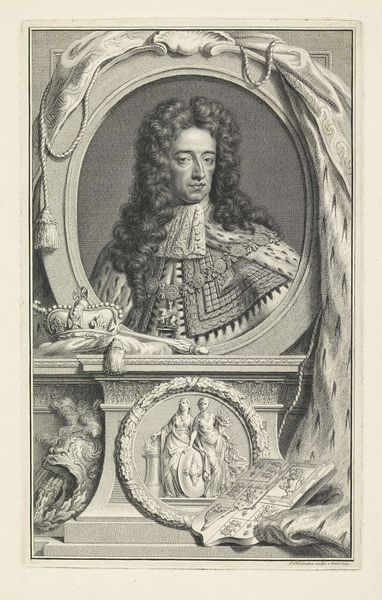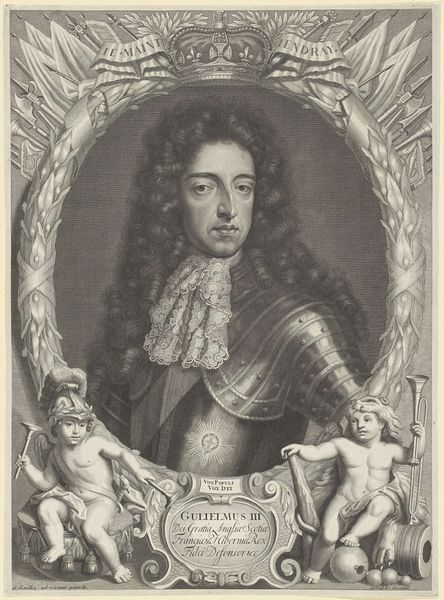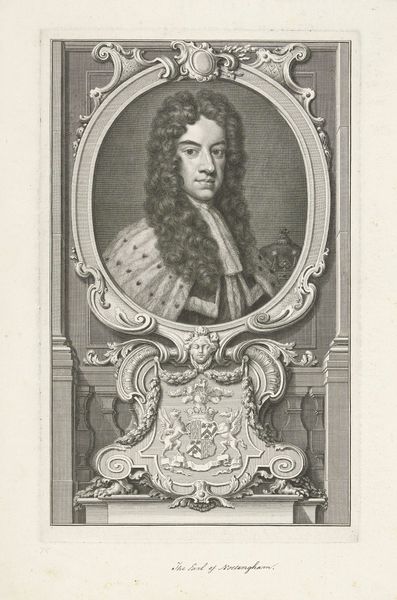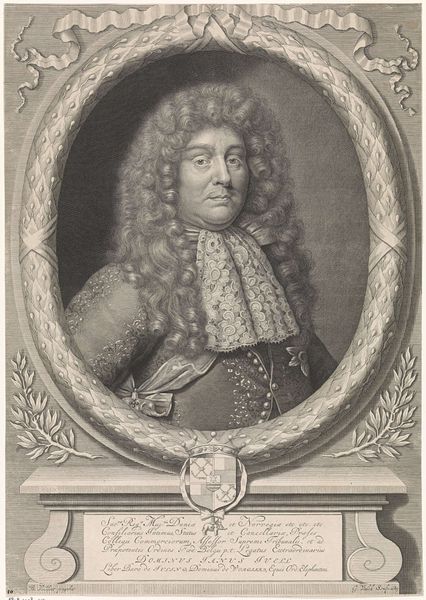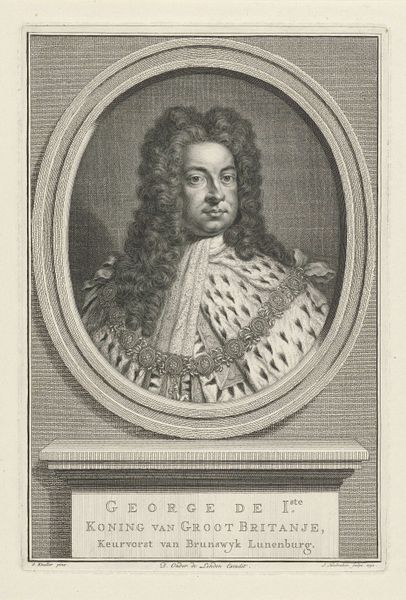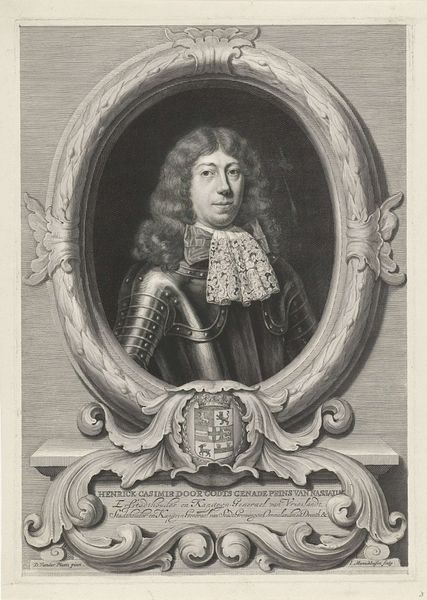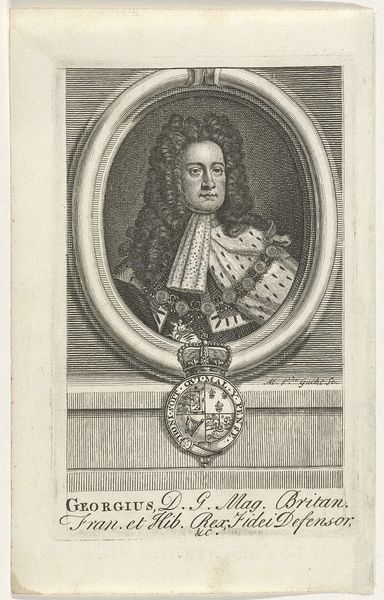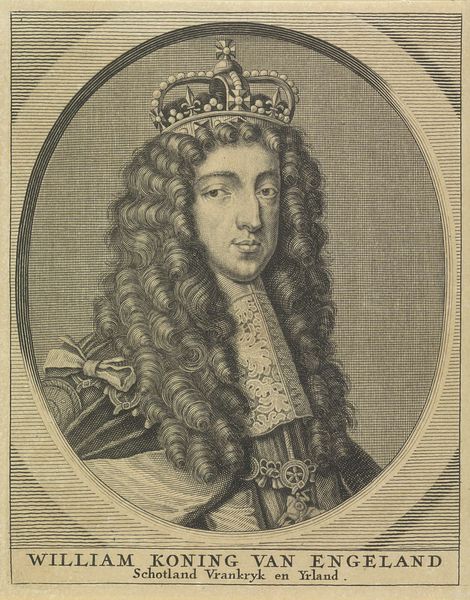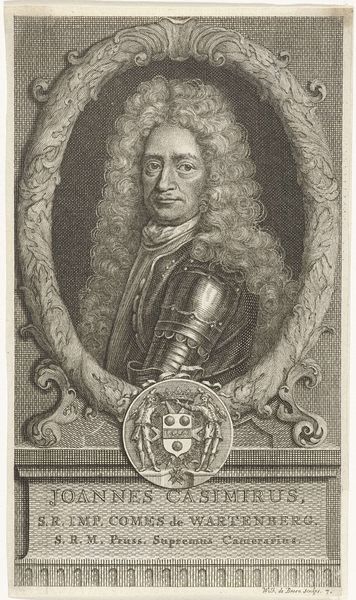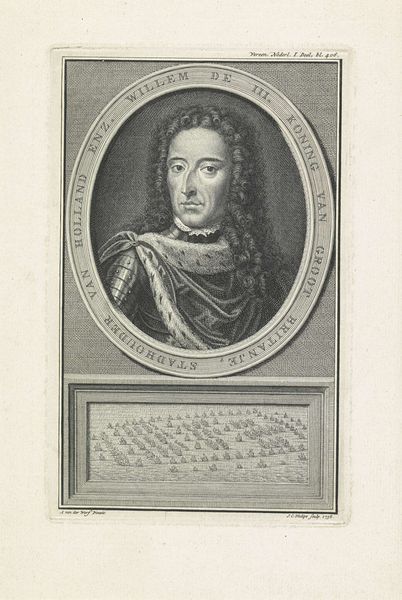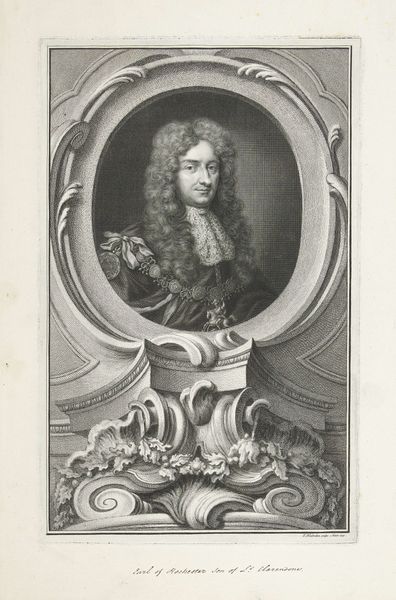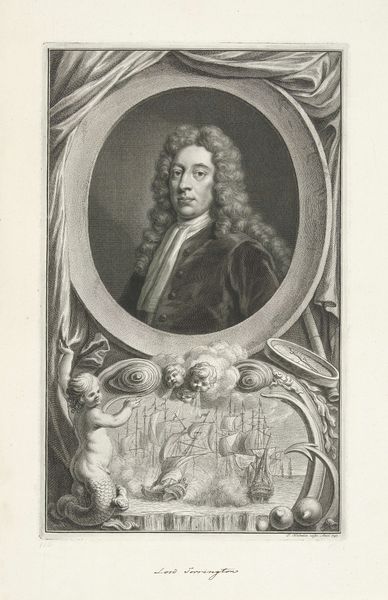
engraving
#
portrait
#
baroque
#
old engraving style
#
history-painting
#
engraving
Dimensions: height 350 mm, width 217 mm
Copyright: Rijks Museum: Open Domain
Curator: Looking at this image of George I by Jacob Houbraken, made in 1746, what's your immediate reaction? Editor: Regal. I mean, look at the detail, the ornate frame. It feels very official, like propaganda of some sort, all that excessive finery, laid bare for everyone to admire. It's like an early form of marketing. Curator: Indeed. Houbraken’s expertise is on full display here; an engraving, it really brings history to life, doesn’t it? It gives you such insight into the world then, how a ruler wanted to be perceived. Look at the ermine, that cascade of curls – power personified! Editor: And it's so *material*. It had to be meticulously crafted with engraving tools, painstaking labor... what type of metal or woodblock did Houbraken use? Who made the tools? I find the layers of material, process, and consumption fascinating. Curator: An artist like Houbraken probably never even considered those aspects of his work. To him, he was a master, immortalizing royalty! Although he wouldn’t turn down payment, I’m sure. Editor: Sure, but consider this—every single mark was a conscious decision. To highlight a single thread in that cape with lines means something very different than not highlighting it. The process inherently creates the statement, no? Curator: That level of consideration, those many fine lines, does indeed amplify his authority. And how he contrasts those dense areas with lighter areas... there is certainly a message being sent. But more broadly than George I himself, what else comes to mind when looking at this? Editor: I'm still fixated on the production—the act of repetitive, precise engraving. In a way, it mirrored the regimented nature of the society it depicted, where roles and expectations were rigidly defined. All of this production for what ultimately became a print for circulation…mass consumption for its day! Curator: It brings it all so much closer to understanding his life, the nuances of portraiture from that era. Thank you, because sometimes you miss all that technical artistry, all those details... and now I find my head filled with it! Editor: Absolutely! Seeing art this way changes how we think about the "finished piece" of art and encourages a deeper appreciation for the work.
Comments
No comments
Be the first to comment and join the conversation on the ultimate creative platform.
